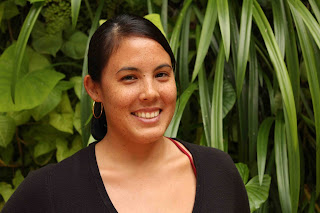One Caribbean with sea turtles

Anjani Ganase, Trinbagonian marine biologist, continues her exploration of marine Tobago. In this issue, she discusses the work of Dr Michelle Cazabon-Mannette who surveyed sea turtles on the reefs of Tobago.This feature was first published in the Tobago Newsday on July 28, 2016. Follow Anjani Ganase on twitter @AnjGanase In some of these columns, I will share the stories of other persons who are connected to coral reefs and the ocean. These connections are made in many ways, through occupation, research, sports or leisure. I will begin with marine biologist, Dr. Michelle Cazabon-Mannette, who grew up in the north of Trinidad and was always curious about the natural world. This curiosity eventually led to her discovery of the underwater world when – at 16 - she got the opportunity to learn to dive in the British Virgin Islands. This opened up a new world for exploration, and she continued to scuba dive on the reefs of Tobago. Her interest in the marine world devel...


